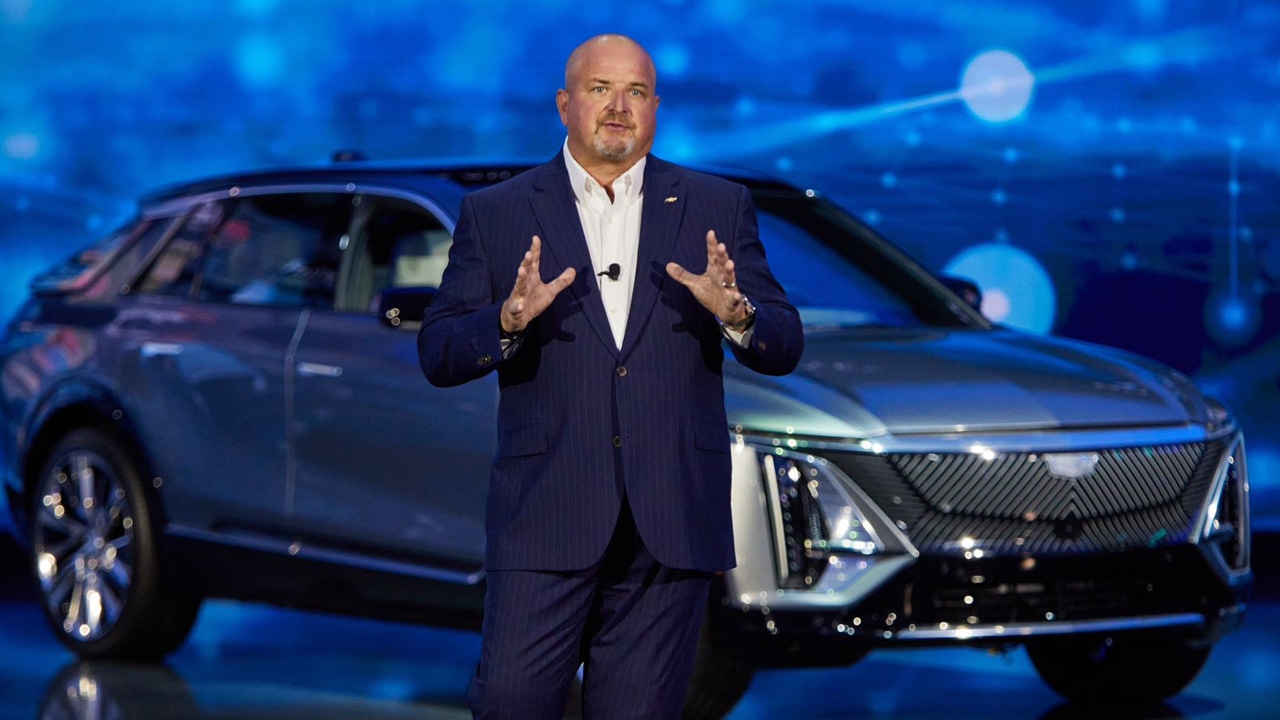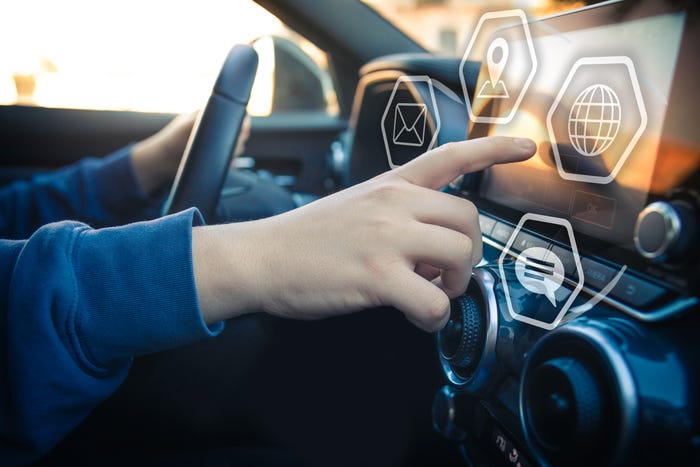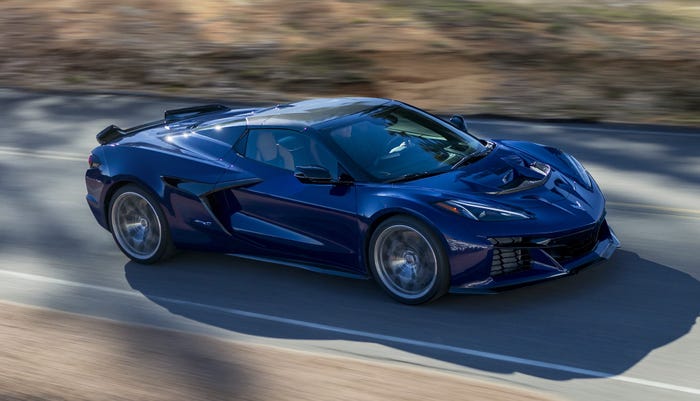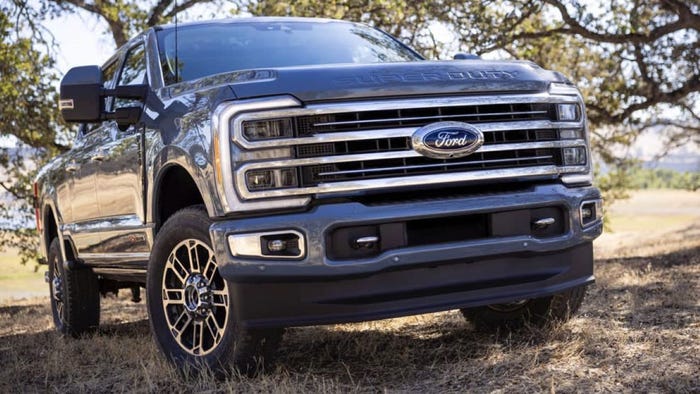Q&A: General Motors SVP Ken Morris
GM’s new product leader discusses the automaker’s “0-0-0” goals and future direction.

Following the retirement of longtime General Motors product leader Doug Parks, Kenneth E. (Ken) Morris was promoted effective Jan. 2 to senior vice president, Product Programs, Product Safety and Motorsports. He now leads the global team that oversees all the company’s vehicle and propulsion programs from inception to launch and beyond, as well as the teams driving GM’s safety and motorsports efforts. His former role as vice president, Global Vehicle and Propulsion, Electric, Autonomous and Fuel Cell Vehicle Programs was only slightly less challenging.
With a background in vehicle development and GM’s highest available driving certification, Morris has logged thousands of vehicle development miles at tracks such as Germany’s Nürburgring and America’s Virginia International Raceway, Road America and Road Atlanta. A 1989 graduate of Purdue University with a Bachelor of Science degree in mechanical engineering, he currently serves on Purdue’s Mechanical Engineering Advisory Council.

WardsAuto: If its long-stated mission is still “0-0-0” – zero crashes, zero emissions and zero congestion – how does GM help to achieve those noble goals, starting with congestion?
Morris: That links to AV, autonomous driving and a lot of our current ADAS (advanced driver assistance systems) can help space vehicles and keep everyone moving. Something as fundamental as active cruise control has elements of autonomous that will be more attentive than a driver sometimes can be, which can help congestion.
When you fast-forward all the way to autonomous vehicles that truly drive themselves and have real visual communication with the infrastructure, other vehicles and everything around them, they are wide awake 100% of the time. Human drivers are not always that aware of their surroundings.
(GM subsidiary Cruise has resumed manual driving for data collection, beginning in Phoenix, as it relaunches its AV development efforts following an October 2023 safety-related pause. “This work is done using human-driven vehicles without autonomous systems engaged and is a critical step for validating our self-driving systems as we work towards returning to our driverless mission,” it stated in an April 9 blog post. “We believe AVs will save lives and significantly reduce the number of accidents… [and will] also improve lives – including creating convenient and safe transportation options for the elderly and those with disabilities.)
WardsAuto: And zero emissions?
Morris: That is the EV strategy of zero-emissions propulsion systems. Whatever we can do as an industry to help reduce harmful emissions is a noble cause, and having electric vehicles that are absolutely zero emissions, where other types of advanced propulsion systems are not zero emissions, is the direct linkage.
WardsAuto: And zero crashes?
Morris: As you know, the government has announced that automatic emergency braking systems are going to be mandated by 2029, and that one system can absolutely reduce crashes. Again, when you look at the highest-level technology, which is AV, advanced emergency braking is fundamental in terms of technology that will be spread across the industry. That is one step toward that goal, but I think ultimately autonomous vehicles that have lidar and radar sensing and know where all other vehicles are and where pedestrians are, is our best hope for avoiding crashes.
WardsAuto: GM’s long-stated goal to achieve 100% BEVs in the next several years has evolved into finding the right balance of battery-electric, hybrid and internal-combustion engines, depending on customer demand.
Morris: We all have to be able to read and react to the market situation, and the number one input into what we do is, what do customers think, what do they want and what will they enjoy about our vehicles. We also have regulators, and we know that automotive is one of the most complex and most heavily regulated businesses in the world.
Five or six years ago, we embarked on a path toward all electric vehicles, and we really haven’t deviated very much from that path. We have capitalized the drive units and the batteries that we need, and we’ve integrated ground-up new electric vehicles.
What we’re seeing is a combination of things. Customer desires are not 100% there yet, which everyone knows will be a transition. The infrastructure is still coming up to speed, and it’s getting better. Then there’s the regulatory environment on how PHEVs (plug-in hybrid-electric vehicles) are treated, and PHEVs for some situations such as towing and hauling are better.
The regulatory environment may cause us to change how the engine and transmission function on a normal ICE vehicle, and the customers will like the PHEV solution better because it gives them what they want.

WardsAuto: Several years ago, after the Chevy Volt extended-range EV was canceled, (GM President) Mark Reuss told us that GM would not build any more hybrids going forward. It would transition from ICE to BEV, but no more hybrids, primarily because of the cost of hybrid propulsion systems.
Morris: None of us has a true vision of what will happen six years in the future, especially with the regulatory environment. So, we are optimizing our portfolio. A pure hybrid-electric vehicle is really a difficult thing to justify from the customer standpoint because of its added cost, and its cost-versus-benefit equation isn’t as good as it is for a plug-in hybrid with increased range.
Data shows that the overwhelming majority of trips are less than 10 miles (16 km), so with a PHEV, you almost never have to use the gas engine. And there are financial advantages to PHEVs, including cost to both the company and the customer,
WardsAuto: What about the balance of cost versus competitiveness, which becomes increasingly challenging with the cost of batteries and other technologies?
Morris: The key thing is to make sure that we are giving people vehicles that are exciting to them and are what they want. The easiest thing would be to take out customer-facing content to offset the cost of the battery, for example, but customers would not like that. They would search elsewhere to find a better solution for their needs.
So, we will not cheapen our vehicles by taking content out. We want people to love their GM vehicles. We also have a full portfolio of EVs from the Chevy Equinox and Chevy Bolt all the way up to the Cadillac Escalade IQ and the GMC Hummer EV Truck and SUV. That portfolio can make just about anybody happy.
About the Author(s)
You May Also Like
_(2).jpg?width=700&auto=webp&quality=80&disable=upscale)


